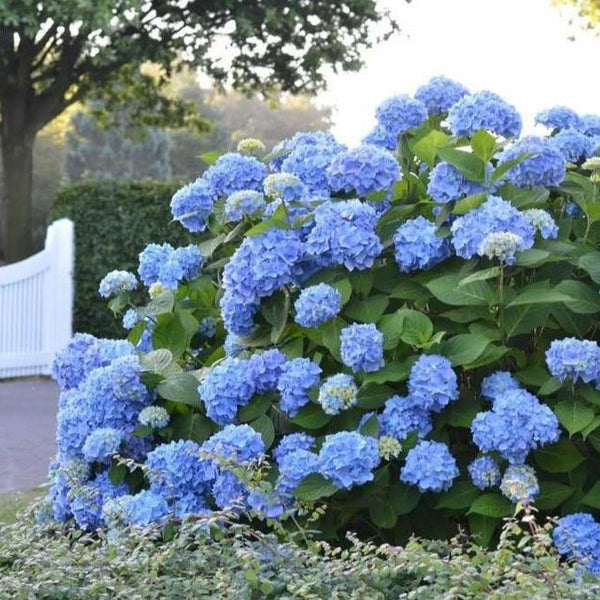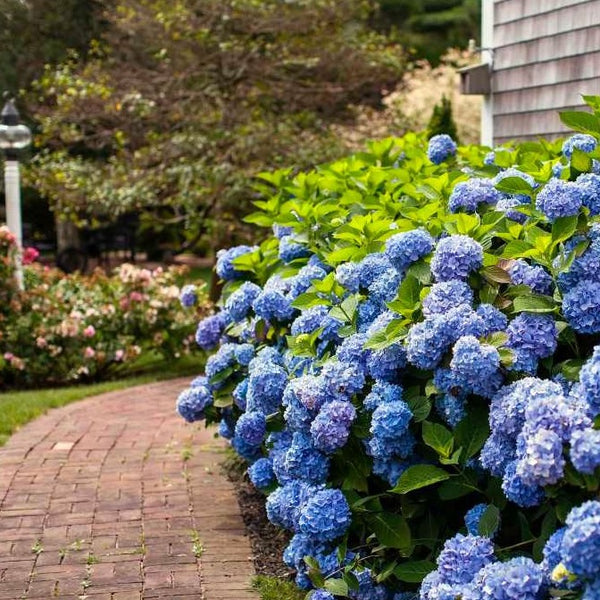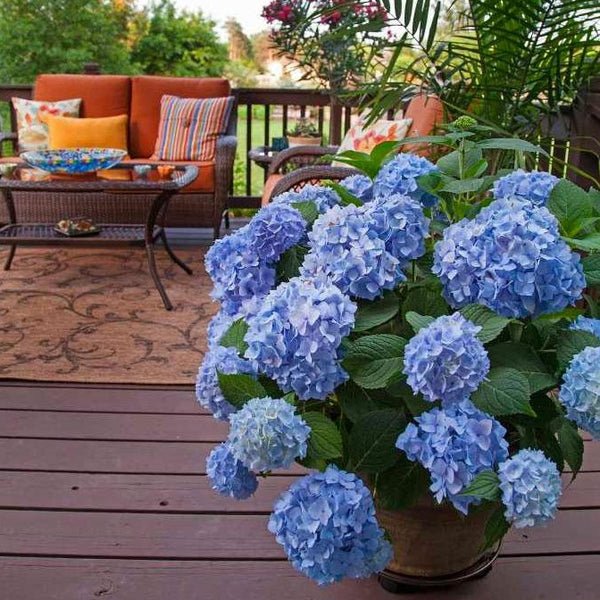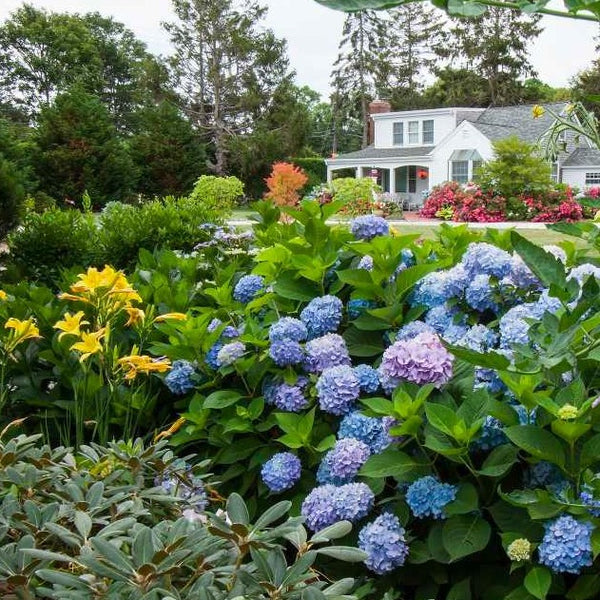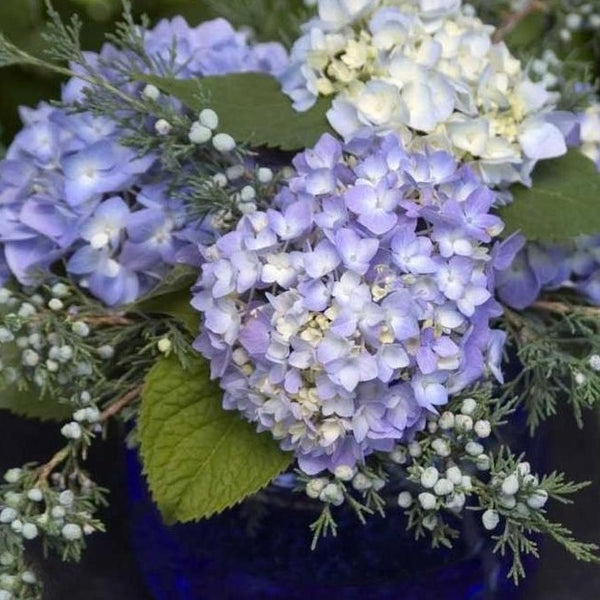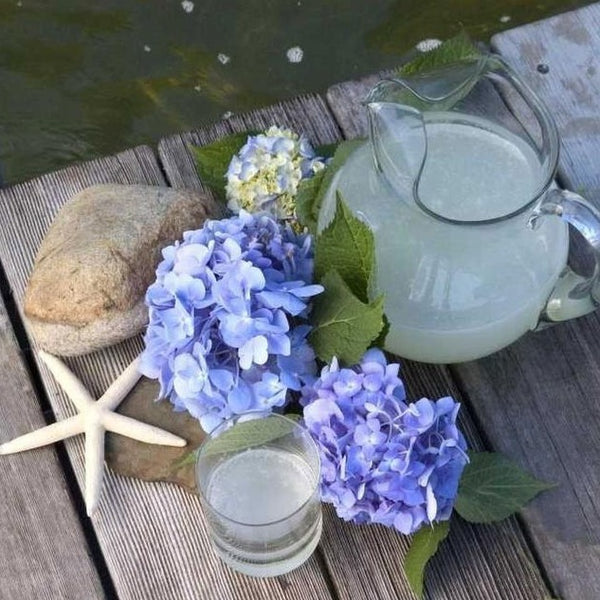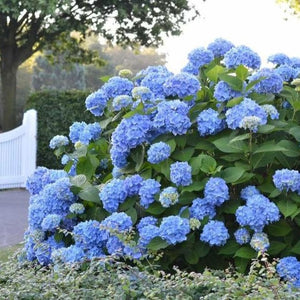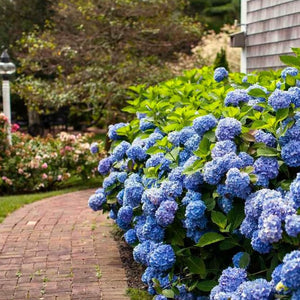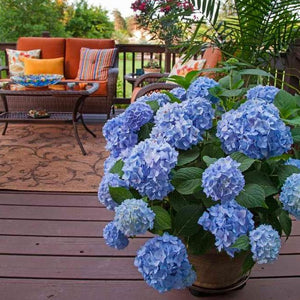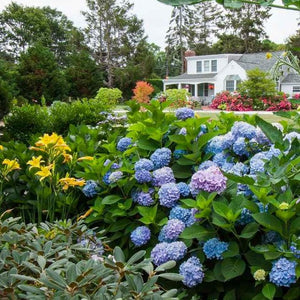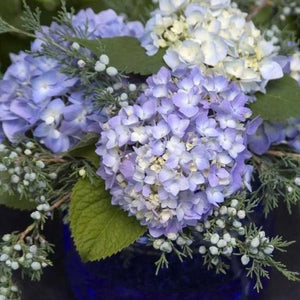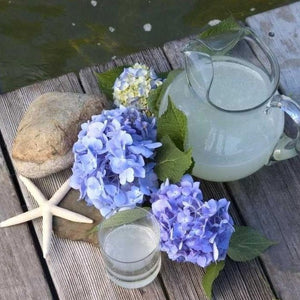Endless Summer® Hydrangea
Product Details
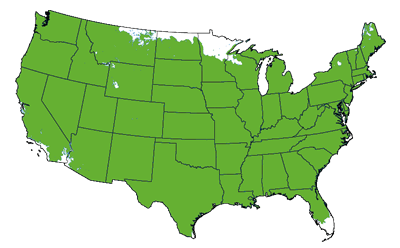 Growing Zones 4-9
Growing Zones 4-9
| Soil Type | Well Drained |
| Sunlight | Partial |
| Drought Tolerance | Good |
| Mature Height | 3-4 Feet |
| Mature Width | 4-5 Feet |
| Bloom Color | Blue |
| Brand | Endless Summer Collection |
| Shipping Restriction | AZ |
The Endless Summer® Original Hydrangea is the first Hydrangea in the Endless Summer® collection and still a best-selling favorite! This Hydrangea is one of the very first to bloom on old wood as well as new growth!
This lovely, mounded variety can fit in most spaces with a mature size of 3-4 feet in height and 4-5 feet in spread. Enjoy an extended bloom time through 3 seasons! The Original blooms from early spring through fall. Blooms range from blue to pink depending on the pH of your soil.
The Endless Summer® Original is so versatile in the landscape. From single specimen to group to hedge to container plantings, your can't go wrong with this beauty! This Hydrangea thrives in partial shade and well-drained, moist soil. The Original is hardy and disease resistant making it easier to care for than older varieties. And don't forget to cut a few flowers to enjoy inside your home!
You are sure to love the Endless Summer® Original Hydrangea! Get yours today!
How To Prune An Endless Summer Hydrangea
You don’t need to prune hydrangeas, but pruning after they are done blooming can help encourage a bushier growth and renew an older plant.
When Does This Hydrangea Bloom?
You can expect lush bloom from spring to summer.
Where Should You Plant This Shrub
Pick a spot that has well drained soil with part shade conditions in grow zones 4-9.
When planting your Endless Summer Hydrangea be sure you have the right location and conditions for your new plants to thrive. Spring and Fall are ideal times to plant Hydrangeas. Avoid planting hydrangeas in summer when temperatures are mid80s or higher.
The Endless Summer Hydrangea requires full sun to part shade and prefers moist, well-drained, fertile soil. In hot climates, hydrangeas will do best with some shade. If you have alkaline soil and want a blue hydrangea, be sure to amend your soil. To acidify your soil, amend with aluminum sulfate or elemental sulfur. If you are seeking a pink color, add lime several times per year. Keep the soil moist, but not saturated, especially in summer and in the first year after planting. Throughout its life Hydrangeas will do best with a deep watering once weekly during hot temperatures. Mulching at about 3 inches deep is highly recommended for hydrangeas. Mulching will cut back on watering needs and protect your plant in extreme temperatures. Choose a slow release fertilizer for flowering plants. Fertilize once in spring after the last chance of frost and again in early summer for best results. You don’t need to prune hydrangeas, but pruning after they are done blooming can help encourage a bushier growth and renew an older plant.
The best way to prevent disease and pests is by providing the appropriate care for your plants. Proper location choice, watering, and fertilization are the keys to your success. You can treat mites, scale, whiteflies, and aphids naturally with neem oil or insecticidal soap. For severe infections you can use pesticides like carbaryl, also known as Sevin. Fungal infection can be prevented by making sure the planting site has good drainage and by avoiding overhead watering. Fungal infections can be treated with a fungicide. Generally, treating fungus after infection isn't effective so if you have problems with other plants or in a prior year, treat preventatively in early spring.
Learn when to prune your flowering shrubs.
For additional options, be sure to browse our Hydrangea and Hydrangea tree collections.


